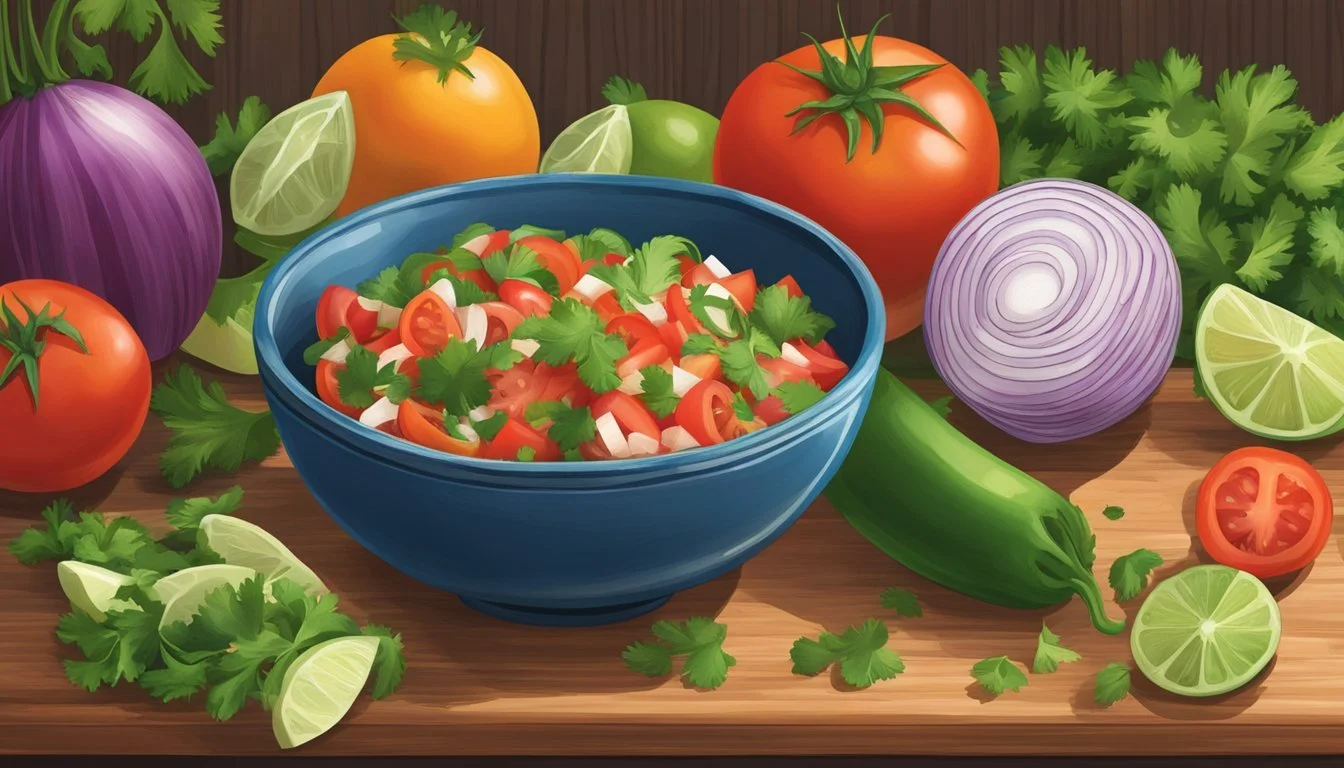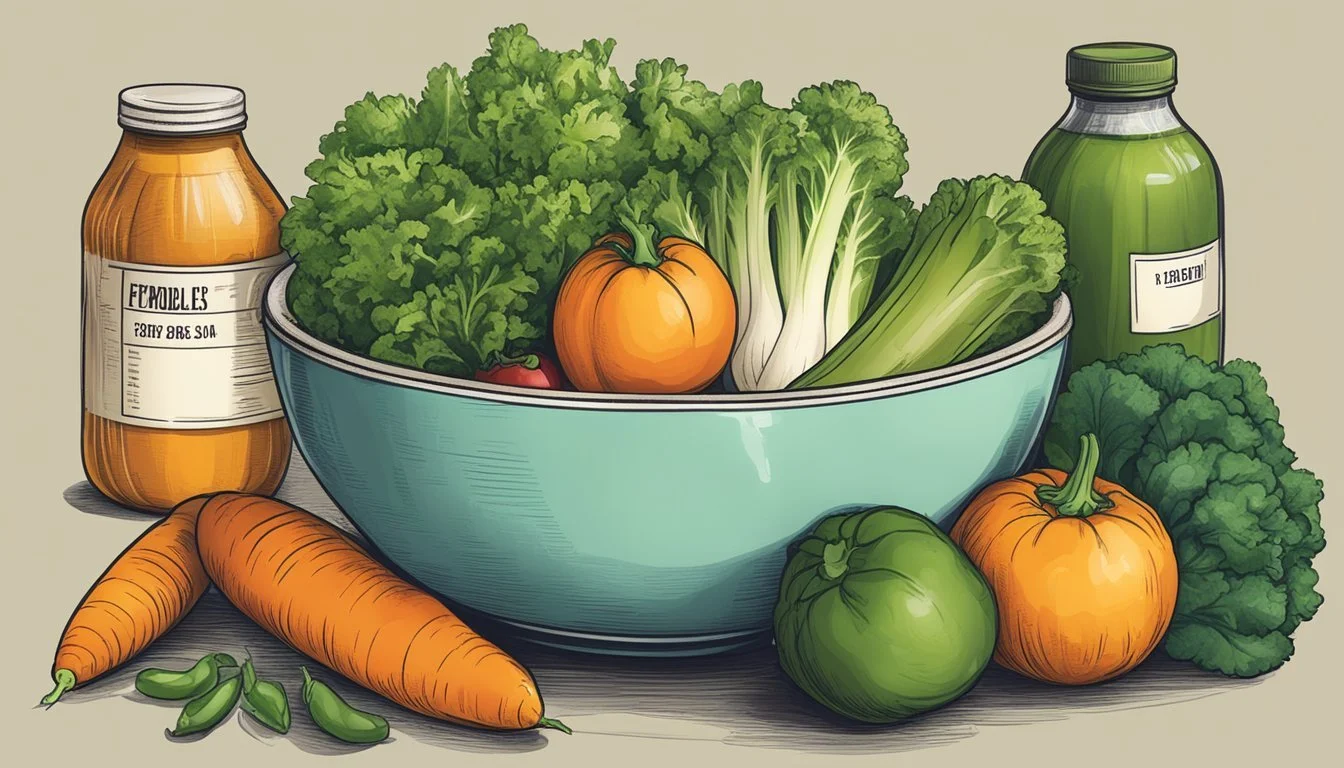Does Pico de Gallo Go Bad?
Understanding Shelf Life and Proper Storage
Wondering if your freshly made pico de gallo goes bad? Pico de gallo, a Mexican food staple made from fresh ingredients like tomatoes, onions, cilantro, and lime, can last up to three to four days in the refrigerator when stored in an airtight container. This salsa fresca, known for its vibrant flavors, requires proper storage to maintain its freshness and prevent any risk of spoilage.
The key to extending the shelf life of pico de gallo is to refrigerate it promptly. If left out at room temperature for more than two hours, bacteria can multiply rapidly, making it unsafe to eat. Additionally, while refrigeration keeps it fresh for a few days, freezing pico de gallo can extend its shelf life up to six months.
Those who love Mexican food know the importance of preserving the bright, zesty taste of their salsa fresca. Draining any excess liquid before storing it can help retain its flavor and texture. Storing it properly ensures you can enjoy this beloved dish without compromising on safety or taste.
Understanding Pico de Gallo
Pico de Gallo is a fresh Mexican condiment that combines vibrant ingredients to create a burst of flavor. This section explores its essential components and how it differs from traditional salsa.
Key Ingredients and Preparations
Pico de Gallo, also known as salsa fresca, consists of simple, fresh ingredients that contribute to its distinct flavor and texture. Tomatoes, preferably ripe and firm, are the base, providing juiciness and a vibrant red color.
Onions, typically white or red, add a crisp texture and a sharp contrast to the sweetness of the tomatoes.
Cilantro infuses a fresh, herbal note that balances the dish.
Lime juice serves as a key acidic component, enhancing flavors and preserving freshness.
Jalapeños bring a subtle heat, tailored according to preference, while a touch of salt ties all the elements together. Careful preparation, such as finely chopping the ingredients, ensures even distribution of flavors and a uniform texture.
The Difference Between Pico de Gallo and Salsa
Though often confused, Pico de Gallo and salsa are distinct preparations within Mexican cuisine. The primary difference lies in their texture and preparation method.
Pico de Gallo is a chunky, uncooked mixture of chopped fresh ingredients. It maintains its integrity with identifiable pieces of tomatoes, onions, and other components.
Salsa, on the other hand, often has a smoother texture and can be cooked or raw. It may include a wider variety of ingredients, such as roasted tomatoes or tomatillos, and a blend of spices.
While Pico de Gallo is typically less liquid due to its chunky nature, salsa can range from thick to watery, based on the specific recipe used. These variations contribute to their distinct uses and flavor profiles in Mexican dishes.
Factors Influencing Freshness and Quality
The freshness and quality of pico de gallo are highly dependent on its ingredients and storage methods. Properly handling and storing the ingredients ensures the best flavor and extends the shelf life.
Role of Ingredients in Freshness
Freshness largely hinges on using high-quality, fresh ingredients. Fresh tomatoes, crisp cilantro, sharp onions, and zesty fresh lime juice contribute to a vibrant and fresh pico de gallo. Wilted or old ingredients diminish flavor and quality. Moisture content is also critical. Too much moisture can lead to a soggy texture and quicker spoilage. It's advisable to drain any excess liquid from ingredients before mixing and storing the pico de gallo.
Ideal Storage Conditions
Proper storage is key to maintaining freshness. Refrigeration at temperatures below 40°F (4°C) is essential, as it slows down bacterial growth. An airtight container helps minimize air exposure, reducing oxidation and maintaining moisture balance. Ensure to refrigerate the pico de gallo within two hours of preparation to avoid bacterial contamination. Regularly checking and draining any excess liquid that accumulates can further preserve its quality. Avoid storing pico de gallo in the pantry, as room temperature accelerates spoilage.
Shelf Life and Storage Guidelines
Pico de gallo is best enjoyed fresh, but with proper storage techniques, it can last for a few days in the fridge or even be frozen for later use. Paying attention to storage methods and shelf life will help ensure safety and taste.
Storing Pico de Gallo in the Fridge
To keep pico de gallo fresh, store it in an airtight container. This method minimizes air exposure, which can cause the ingredients to degrade faster. The mixture typically remains fresh for up to three days when kept in the refrigerator.
The optimal temperature range for storing pico de gallo is between 35°F (1.7°C) and 40°F (4.4°C). This helps to slow bacterial growth and maintain the freshness of the ingredients. Over time, ingredients like tomatoes may become mushy, and the cilantro can wilt, so it is best consumed within this period.
If any foul odor, discoloration, or mold appears, the pico de gallo should be discarded immediately to avoid foodborne illness.
Freezing Pico de Gallo
While freezing pico de gallo can extend its shelf life, it may alter the texture and freshness of the ingredients. For best results, place the salsa in a freezer-safe, airtight container. Make sure to leave some space at the top as the contents will expand when frozen.
Pico de gallo can be frozen for up to two months. When ready to use, thaw it in the refrigerator. Thawed pico de gallo is ideal for cooked dishes rather than serving as a fresh salsa due to changes in texture, especially the tomatoes.
Label containers with the date before freezing to keep track of storage time. This ensures the salsa is used within a safe period.
Recognizing Spoilage
Identifying spoilage in pico de gallo is crucial for maintaining food safety and avoiding potential health risks. Key indicators include visual changes, textural shifts, and the presence of harmful bacteria or mold.
Visual and Textural Indicators
Spoiled pico de gallo often displays discoloration. This can include a dulling of the vibrant colors of the tomatoes, onions, and cilantro. The appearance of mold in any color is a clear sign that the food is no longer safe to eat and should be discarded immediately.
Another indicator is a slimy texture. Fresh pico de gallo has a crisp and firm consistency, but spoilage leads to a slimy or mushy texture. Drain away any excess liquid, as a watery consistency might also suggest that the pico de gallo has begun to spoil.
Health Risks of Spoiled Pico de Gallo
Consuming spoiled pico de gallo can pose serious health risks. Bacteria such as Salmonella and E. coli can thrive in improperly stored or spoiled food, leading to foodborne illnesses. Symptoms may include nausea, vomiting, diarrhea, and abdominal cramps.
Refrigeration is critical in preventing bacterial growth. Ensure that the pico de gallo is stored at temperatures between 35°F (1.7°C) and 40°F (4.4°C). The USDA recommends consuming refrigerated pico de gallo within three days to minimize the risk of infection from harmful bacteria. Always check for off smells, which can indicate bacterial activity.
By observing these signs, individuals can better maintain the quality and safety of their pico de gallo.
Tips to Extend Shelf Life
To ensure pico de gallo stays fresh longer, focus on proper storage and using natural preservatives. Following food handling and hygiene practices is also crucial.
Using Preservatives
Natural preservatives like lime juice and vinegar can help extend the freshness of pico de gallo. These acidic ingredients inhibit bacterial growth and preserve the flavor. Adding a bit of olive oil can also help as it creates a barrier against air and moisture.
Lime Juice - Use freshly squeezed lime juice. It not only adds flavor but also helps preserve the ingredients.
Vinegar - A splash of vinegar can significantly add to the shelf life. Choose mild types like apple cider vinegar for flavor compatibility.
Olive Oil - Incorporate a small amount to create a seal that minimizes air exposure and moisture retention.
Food Handling and Hygiene Practices
Keep everything clean to enhance food safety. Always use clean utensils and wash hands thoroughly before preparing pico de gallo. Store it in an airtight container to reduce exposure to air and moisture, which can lead to spoilage.
Refrigerate immediately after preparation. The ideal temperature is between 35°F (1.7°C) and 40°F (4.4°C).
Seal with plastic wrap directly on top of the pico de gallo before sealing the lid. This further reduces air contact.
Ensure that all ingredients, especially perishables like tomatoes and cilantro, are fresh to begin with.
Proper storage and hygiene are key to preserving the freshness and safety of your pico de gallo.
Serving and Usage Ideas
Pico de Gallo is a versatile element in Mexican cuisine, celebrated for its fresh flavors and adaptable usage. It can be enjoyed as a side dish or incorporated into various recipes to enhance taste and texture.
Pico de Gallo as a Side Dish
Pico de Gallo shines as a side dish, complementing the flavors of main courses. One classic pairing is chips and salsa, where the crunch of chips contrasts with the zing of fresh ingredients in the salsa. This combination is a staple in Mexican food culture.
Ceviche is another excellent option. The marinated seafood's citrus notes harmonize well with the tangy and vibrant flavors of Pico de Gallo. This pairing not only adds flavor but also enhances the freshness of the dish.
Serving Pico de Gallo with rice and beans offers a simple yet flavorful accompaniment. The freshness of the tomatoes, cilantro, and onions provides a refreshing counterpoint to the heartiness of beans and rice. This creates a balanced and satisfying meal.
Incorporating Pico de Gallo in Recipes
Beyond serving it as a side, Pico de Gallo can elevate various dishes. It is a fantastic topping for tacos, burritos, and nachos. The fresh salsa lends a burst of flavor, making every bite more interesting and enjoyable.
Incorporate Pico de Gallo into a quinoa and black bean salad for a nutritious and delicious twist. It adds a refreshing zest that complements the salad's ingredients perfectly.
Adding Pico de Gallo to vegan mac and cheese infuses the dish with a fresh, tangy layer, offering a delightful contrast to the creamy texture. It can also be a delightful topping for a baked sweet potato, providing a blend of sweet and savory flavors.
Pico de Gallo's versatility makes it an indispensable component of Mexican cuisine, whether served as a side or used to enhance various recipes.
Conclusion
Pico de Gallo, a popular fresh salsa, can spoil if not properly stored. To maximize its shelf life, refrigeration in an airtight container is essential.
Fresh ingredients such as tomatoes and onions in Pico de Gallo are perishable. This salsa typically lasts about 3-5 days in the refrigerator.
Spoiled Pico de Gallo can be identified by changes in color, texture, or smell. Look for brown discoloration, slimy feel, or a sour odor.
Storage Tips:
Refrigerate immediately after preparation or opening.
Use an airtight container to maintain freshness.
Avoid freezing, as it may alter texture.
By following these tips, you can enjoy fresh and delicious Pico de Gallo for several days.








